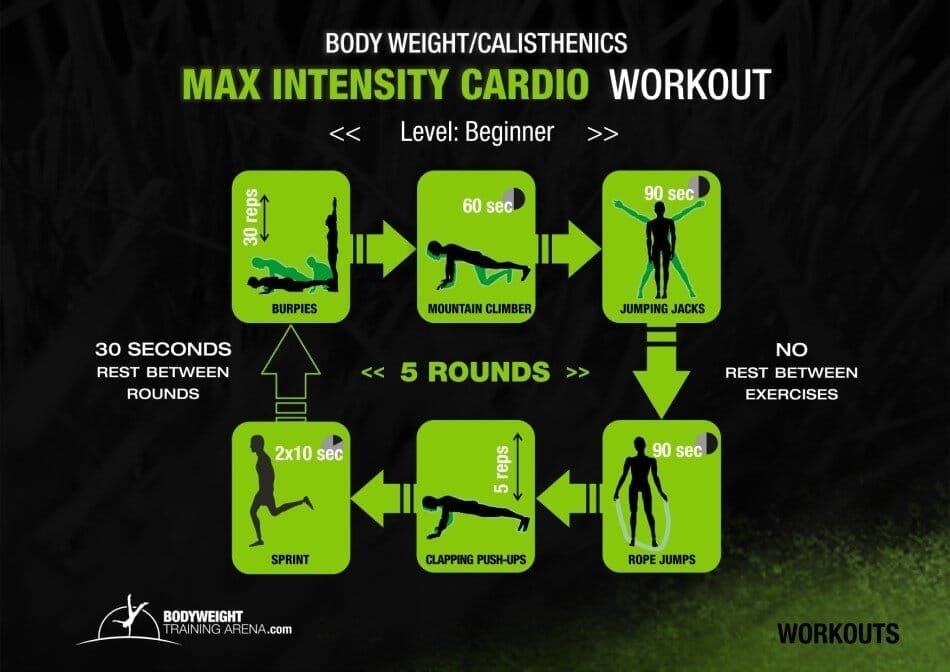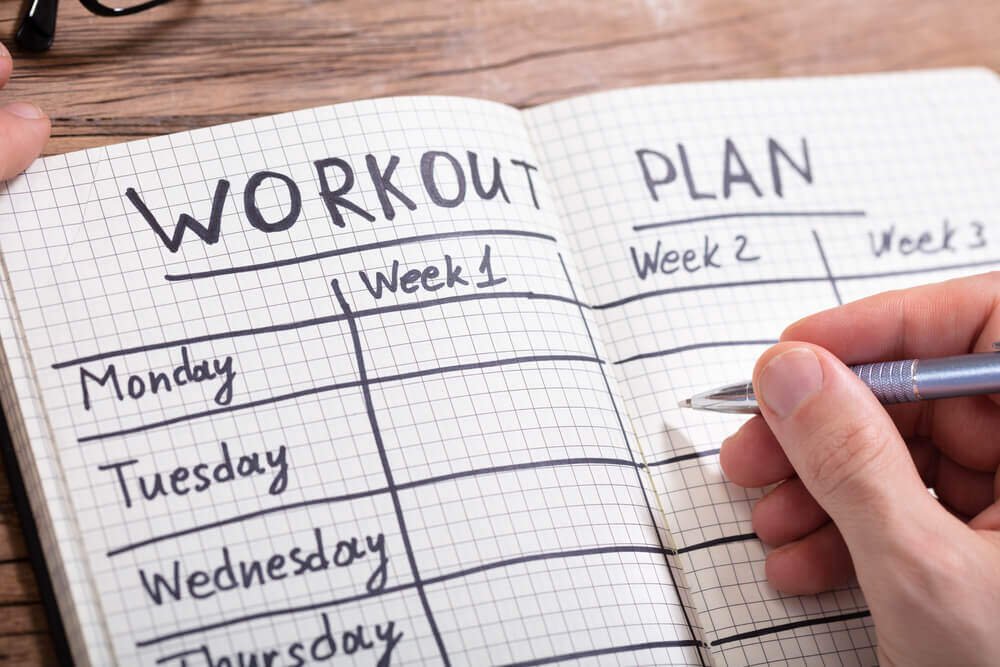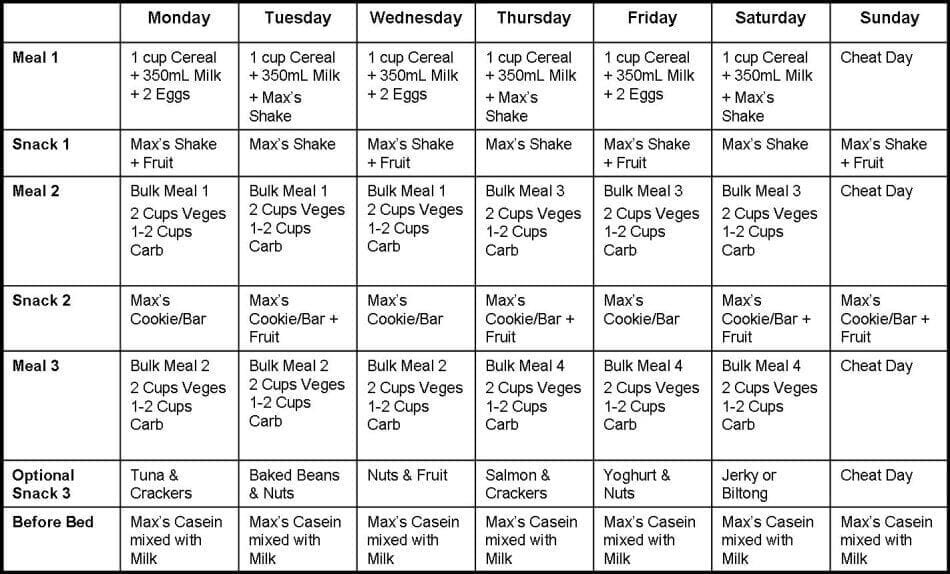Calisthenics athletes are some of the most in-shape people in the world.
The level of strength and sheer willpower it takes to accomplish some of the feats of strength that calisthenics athletes reach is not something that comes easy, and in reality, this is something that comes from endless years of diligent training.
Although this also means good news for us – with the right amount of dedication of effort, we too may be able to reach the heights of fitness that calisthenics athletes achieve.
Let’s dive in and take a look at how you can eat and train like a calisthenics athlete.
Table of Contents
What Do Calisthenics Athletes Eat?
Eating like a calisthenics athlete is exactly the same as eating like any other athlete. You know the drill; high protein, a slight calorie increase/decrease over maintenance, and a focus on high-quality foods over processed junk.

Of course, we cannot just make a blanket statement as to what every calisthenics athlete in the world eats, but what we can do is tell you about the most efficient course of action and explain why diet is so integral.
With a diet, there are two routes calisthenics athletes will normally take; bulking and cutting.
As you’d expect building muscle and developing strength is a key part of being a calisthenics athlete, and the most optimal way to do this is to just be in a slight calorie surplus over your maintenance.
However, due to the fact that so many calisthenics exercises are performance-based, it is also to keep a lean physique. This is where cutting/dieting comes in.
Calisthenics athletes will often switch between these two modes of dieting in order to optimise their training/nutrition, and if you intend to eat and train like a calisthenics athlete, it would be a good idea for you to do this too.
Luckily, this isn’t too difficult once you get into the swing of things.
To get a good idea of how many calories you need in a day to lose weight or gain muscle, just search for a calorie calculator and input your details – from there, you should have a rough estimate of where you need to be.
Weekly Calisthenics Diet Plan
Now that we have gone over the philosophy of how calisthenics athletes set up their diets, we can now go into what this looks like in practice.
When it comes to the actual foods that you should be eating, you should have a diet that is well-balanced and rich in nutrients. Things like meat, vegetables, rice, oats, fruit, and fish are all mainstays in a calisthenics athletes’ arsenal, and eating this type of diet will support the rigorous training you will be putting yourself through on a daily basis.
Of course, one day of eating well isn’t enough. Consistency is key.
Getting results from calisthenics takes months of diligent training and dieting, and setting up a weekly routine is the most effective method to ensure you stay consistent and get all of the nutrients you need.
To give you a practical example of what this may look like in the real world, an average week for a calisthenics athlete may look something like this;
Source: 7 Week Diet Exercise Plan – Diet Plan (dietplanlist.com)
That’s not to say that you should follow the previous example to a T, and if you choose to do so, you may not end up getting the results you were looking for.
Each person’s diet is entirely individual – this is why it is so important to figure out how many calories you need first and then create your diet plan based around that.
In reality, your own personal diet plan may look nothing like the above example.
As long as you hit your daily nutritional needs, you can tailor your diet however you want (yes, this means you can have cake and chocolate from time to time as long as you write it off as “bulking” – a common tactic within the industry).
Although, it is important to note that trying to optimise everything to the max is not always the way to go. Optimising your diet completely is only likely to give you a nominal increase in performance, and in reality, having a diet that consists of chicken and broccoli every day is a recipe for failure.
You need to create your diet plan whilst also factoring in your own tastes and preferences. Making a diet that you love whilst also allowing you to hit your nutritional needs is the goal, and by doing this, you will maximise your chances of sticking with said diet in the long-run while also being able to eat all the foods you love.
What Are The Main Exercises Calisthenics Athletes Do & Why?
Now we can get onto the fun part; Calisthenics exercises.
There is a sprawling range of exercises that calisthenics athletes choose to do, each of them having its own benefits and targets.
To give just a little explanation of the framework behind any calisthenics athlete’s workout routine; a routine rich in compound movements is always optimal, and any additional work should be completed after all of your core movements are taken care of.
The most classic tools in a calisthenics athlete’s arsenal are push-ups, pull-ups, dips, and squats. These four exercises are the key building blocks that develop calisthenics athletes’ strength, and even people that have been practising this art for years will still incorporate them into their routine to some extent.
If you get good at these movements, you will get strong. Period.
Sure, you may want to jump straight into all of the flashy moves you have seen high-level calisthenics athletes perform on the likes of YouTube or TV, and if this sounds like you, then this is perfectly understandable.
However, with these top-level athletes, we only see the fruits of their labour and not the actual work that got them to where they are now. Moreover, can you guess which exercises got them to be strong enough to perform the spectacles you see today? That’s right; push-ups, squats, dips, and pull-ups.
That’s not to say that you shouldn’t try and learn any of the incredible moves you want to be able to perform. On the contrary; this can keep your training interesting and allow you to work on those fancy moves to wow any onlookers.
However, focusing on the previously mentioned core moves is what is really going to develop your strength, and once you have got your base, you will have the necessary strength to perform more complex exercises and routines.
One last point that is vital is the importance of cardio. Because of the high-intensity nature that calisthenics entails, doing cardiovascular work is all but required if you want to have some level of endurance. You should always take some time to fit some cardio into your schedule, and doing so will benefit your training exponentially.
An Example of a Calisthenics Workout

Source: Calisthenics Workouts Plans I Bodyweight Training Arena
This routine serves as a prime example of what a cardio-centric beginner workout would look like, and following something like this would be incredibly beneficial for the first few months of training in particular.
Adding in a few squats, dips, push-ups or pull-ups to this routine would make it an ideal candidate for you to progress in your calisthenics journey, and similar variations to this are what many calisthenics athletes choose to do on a daily basis.
However, as is the case with diet, doing just a few workouts is not enough.
The Importance of a Workout Schedule

If you ask any calisthenics athlete what their workout routine is, the most likely situation to follow is for them to pull up their year-long schedule that details every workout they intend to do.
This is for a good reason – having a schedule/routine ensures that you make tangible progress with all the exercises you perform, and it also allows you to stay consistent enough to build muscle/lose fat.
Most people vastly underestimate the importance of a routine, and not having one is going to be detrimental to your entire calisthenics journey.
This doesn’t mean that you have to sit down and plan out your workouts for the entire year ahead as some calisthenics athletes do. In reality, all you need to do is make a weekly schedule and stick to it.
Most people find the easiest method her is to follow a calisthenics program or use an app.
Forget about “shocking the muscles” or “changing things up” in an attempt to progress quicker – this simply doesn’t work.
Doing the same exercise week in and week out allows you to keep everything routine and enables you to clearly monitor your progress. As long as your schedule includes some of the exercises we mentioned earlier (squats, dips, pull-ups, and push-ups), you will progress much faster than any other conceivable method, and you will be well on your way to becoming a pro.
Rest & Recovery: How Important Is It?
A veteran calisthenics athlete knows that proper rest and recovery are just as important as training and diet.
The two go hand in hand, and without rest, your progress will be brought to a halt.
The process of learning how to incorporate proper rest is an art, and in reality, it is something that you are going to become more knowledgeable about as you progress.
However, as an absolute minimum; you need at least eight hours of sleep and two days of recovery between working out the same body part.
This doesn’t mean that you can only work out once every two days – in fact, you could even work out every day as long as you are smart about your programming.
The key is to not work out the same muscle group two days in a row, and by doing this, you will guarantee that your body/muscles have ample time to repair themselves and grow back stronger.
In layman’s terms, this means that you could choose to do arms/back on Monday, shoulders/triceps on Tuesday, legs on Thursday, have a one-day rest, and then repeat.
A simple routine like the one above has been the backbone of thousands of training schedules around the world, and if you choose to implement a system close to this, you will be hitting all of your goals in no time.
A common mistake we see many beginners make is working the same muscle groups every single day or doing the same exercises day-in-day-out in order to get an “edge” on everybody else that chooses to implement rest days.
Alternatively, there are some out there who just think people who implement proper rest and recovery are just lazy or using rest as an excuse to not exercise as much.
In both cases, these views are thoroughly flawed, and both examples will end up getting sub-par results and be less efficient than those who choose to implement proper rest.
Rest and recovery are just as essential as a good training routine or diet, and making sure you take the time to kick back and allow your muscles to recover is going to pay you dividends in the long run.
Final Points
So, think you will be implementing any of the steps we discussed throughout this article? If so, makes sure to let us know in the comments and update us on your progress.
In truth, far too many people overestimate the role that genetics play when it comes to skill and talent. In reality, all of these incredibly fit people you see are just like you and I, with the key difference being that they are well and truly willing to give training their all.
If you do choose to actually follow the steps we mentioned we can near-guarantee that you will see exceptional progress, and who knows, maybe it will be you we are writing an article about in the near future.
Good luck.

Founder of www.calisthenics-101.co.uk. Training calisthenics since 2012.
Currently working on: 30 second one-arm handstand, muscle-up 360, straddle planche.

